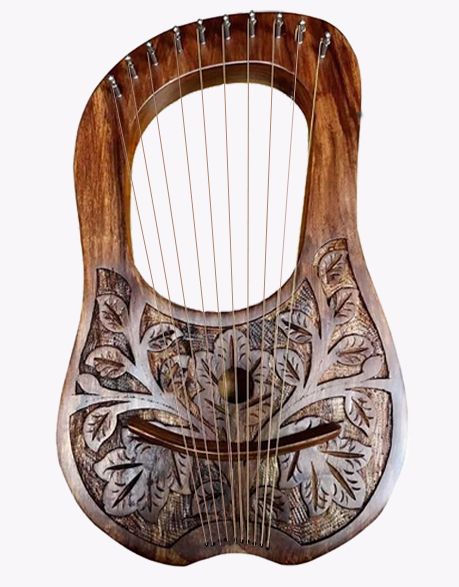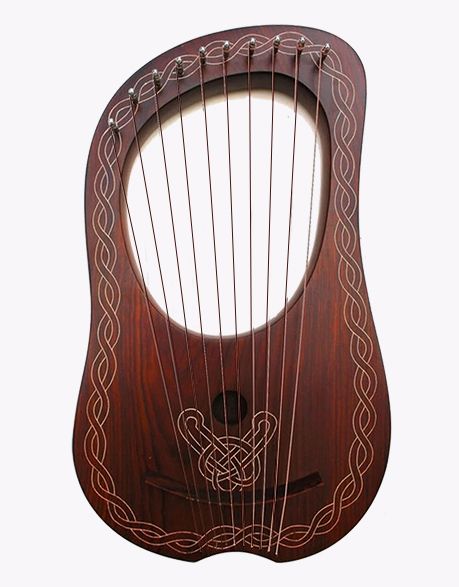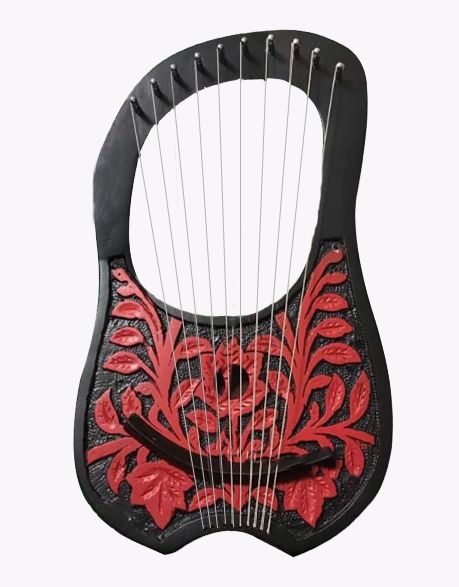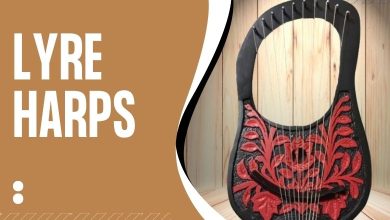Caring Tips for Lyre Harps for Their Longevity!
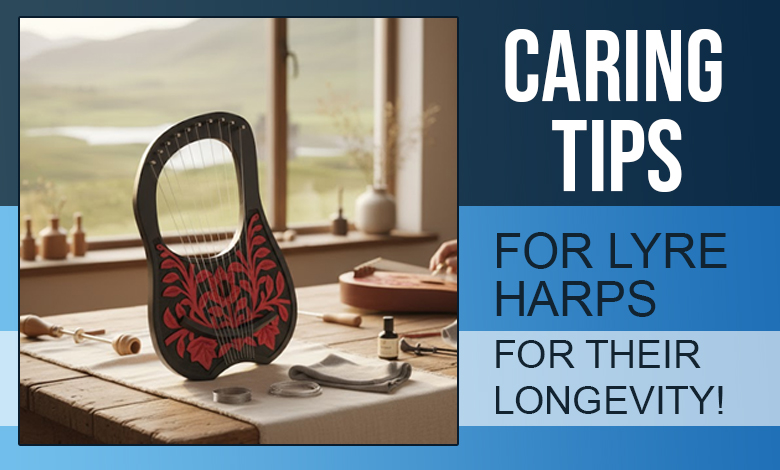
A lyre harp is a stringed musical instrument that has a traditional connection with the Highland. No matter whether it is Ireland or Scotland, this instrument is equally popular in both countries. It comprises multiple parts such as strings, bridge, arms, crossbar, etc. Like other woodwind instruments including bagpipes and flutes, used in Scotland, lyre harps also need proper care for their longevity. To help you know how to maintain, clean, and tune it, we have compiled some extraordinary but simple caring tips for lyre harps. So, keep moving to study these tips to ensure the longevity of your musical instrument.
Table of Contents
ToggleGeneral Maintenance Tips
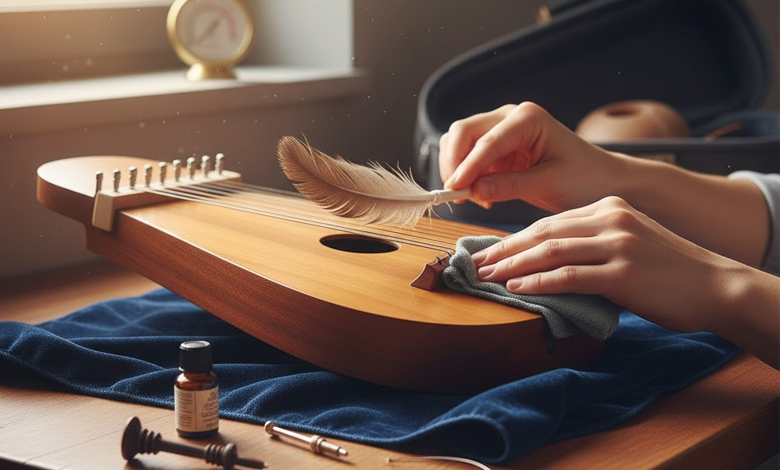
The first and most important aspect of caring for something is to manage its general maintenance. In this aspect, there are three things that need your attention, otherwise, you will have to change it after some time. These 3 primary aspects are handling it carefully, pre and post-cleaning it, and string care. Let’s dive deep to know more!
Handling with Care
When playing or tuning a lyre harp, it is important to use gradual, steady motions and refrain from making sudden movements. When playing, keep a steady, comfortable posture and be mindful of the lyre’s fragility, particularly with regard to storage and moisture. Using your lap or a chair for support, hold the lyre steadily.
Cleaning the Harp
Regular cleaning after use helps preserve the harp’s appearance and sound quality. Doing so is not difficult or time-consuming at all, but a bit of care may be necessary. While cleaning it, ensure using a feather brush or soft cloth. Markets are full of cleaning products. You can also use them to maintain their shine.
String Care
Lyre harps usually have 7-32 strings, depending on the size and variation. These strings are the backbone of musical instruments, which is why their provision is necessary. Their maintenance tips involve regular cleaning to remove fingerprints. Cleaning strings also removes the oil which can cause rust or weaken them.
Changing Strings
Another step related to strings is to change them as you find any symptoms. Generally, there are a few alarming indications with the breakage as the most prominent one. Secondly, in case the strings cannot succeed in producing the melodies that they did in the beginning, you should also consider changing them. Similarly, discoloration or their fraying might be the loud announcements.
Tuning Regularly
Many people underestimate this important step of harp maintenance. Therefore, regular tuning helps them produce soft and lovely melodies for a longer duration. If you are an expert to do so, go with it. Otherwise, consulting an expert might be the best idea. Newbies may also not have all the tools required for its tuning.
Ideal Storage Conditions
You may be aware of the fact that moisture or direct sunlight is not good for wooden or metallic objects. The same is true for lyre harps and their storage in ideal conditions is a necessity. All you need to do is to cover the instrument in its well-fitted case, so moisture or mildew may not impact its health. Likewise, direct sunlight causes a fade in color and decreases the lifespan of wooden parts, particularly. This is why you must confirm that the sun’s rays cannot access them.
Seasonal Care Considerations
For humans, there are 4 seasons in general, while harps only know 2 weathers: hot and cold. Summers are not good for wood or the products made with metal or nylon, while winter becomes hazardous when the temperature suddenly changes from extreme cold to hot. For such weather, the priority must be to keep them in a stable environment. On the other hand, use humidifiers to keep your place from humidity.
Preserving Wood and Hardware
Caring tips for lyre harps also involve preserving the wood and hardware of your product. To do so, you must gently clean the rosewood, which is the top choice to make harps. You must gently clean it and protect it from harsh conditions. Similarly, do not let humidity, oil, or debris impact the strings. This is why their maintenance is the basic requirement.
Routine Inspections
The final step on our list is inspecting the instrument regularly. Check for any fade in color, wear and tear in strings, poor sound quality, etc. If you witness any of such issues, make sure to get the problem solved as a priority. This step not only helps harps to produce expected sounds but increases its lifespan too.
Transporting Your Lyre Harp
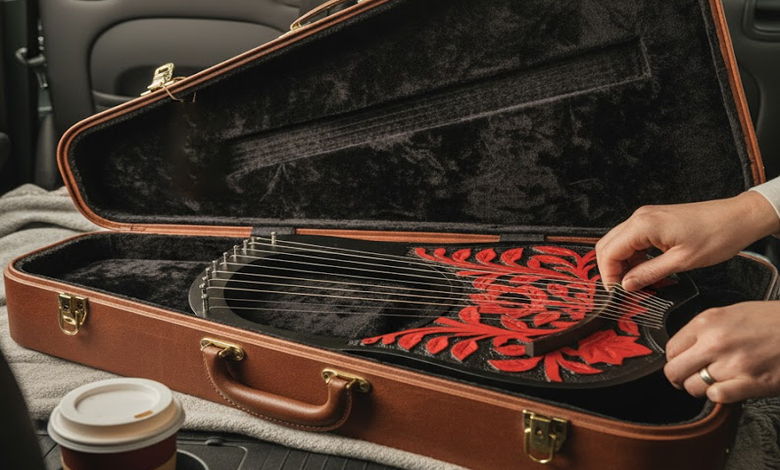
When we are talking about the caring tips for lyre harps, how can we overall their safe transportation. The likelihood of getting damaged remains higher when you are not handling the harp with your hand, so follow the given tips to prevent cracks and breakage.
Protective Cases: Placing a harp in any vehicle from airplane to your personal SUV uncovered (without using protective case) can be the biggest mistake. Road jerks and air turbulence can let the other items fall on it and cause breakage.
Safe Handling in Transit: The safe handling while movement is the basic requirement. People usually place it and get busy viewing the scenes or using their smartphones. A speedy bump can misplace and damage it.
Temperature Changes: New musicians are often seen overlooking the overall climate and the higher or lower temperature has potential to impact the material. If there is too much cold or heat in the vehicle, make it suitable for lyre harp.
DIY vs. Professional Help
After carefully inspecting your stringed instrument, the next step is to get it fixed. There are two ways to repair your lyre: do it yourself or seek professional help. To fix things by yourself, having expertise is necessary, otherwise, you may need to buy another one. Remember, there are a few tasks that you can do yourself, which are given below.
Tasks You Can Handle Yourself
- Use a tuning wrench to gently secure any loose tuning pins to maintain pitch stability.
- Though you need a bit of expertise, you can replace the broken ones. Carefully remove the broken string and install a new one of the same gauge, then tune it slowly to avoid breaking it.
- Fixing the loose bridge is a common DIY practice. If the bridge has come loose, apply a small amount of wood glue and clamp it in place until it dries fully.
- Polishing and cleaning the wooden part of the lyre harp sounds like the easiest DIY tip. You should consider using a soft cloth and wood polish to clean the surface and remove dust or grime.
- Getting cracked is a common issue in wooden instruments. So, you must look closely for any cracks. You can fill the small ones only using wood filler.
When to Seek Professional Support
Seeking professional assistance becomes obligatory if your lyre harp has serious structural damage, such as deep cracks, a broken frame, or warping that affects sound quality. Sometimes, the tuning pins won’t stay tight for longer, or you may be unsure how to replace strings properly, it’s best to consult a specialist. Keep in mind that attempting complex repairs without experience can cause more damage. This is why expert help ensures your instrument stays safe and playable.
Common Mistakes to Avoid
First-time buyers usually make mistakes when playing or maintaining their lyre harps. Most of the time, they mistakenly do it, while unawareness is also often to blame. So, we crafted a list of some mistakes you must ignore to let a lyre harp accompany you as long as you desire.
- Keep your lyre harp out of bright sunlight and out of damp environments.
- Refrain from letting liquids fall off your lyre harp; if you do, wipe right away.
- Be as gentle as you can when tuning. It helps to avoid breaking the string and hitting you or someone around by not rotating too much on the peak point.
- Don’t place anything on top of your lyre harp or put too much pressure on it.
- The life of the lyre harps may end when you drop it carelessly.
- Your cherished instrument’s sound quality may be impacted if you make any additional holes in it.
Buy Long-lasting Lyre Harps at SKC
Everyone today wants to buy lyre harps that could stay longer with him. Remember, it is not possible without its proper care and maintenance. You might want the same. In case, time management is an issue because of the busy schedule, you should buy one made with premium-quality materials. However, finding such products at lower prices is not possible today, but Scottish Kilt Co. cares for everyone and offers a vast collection of lyre harps guaranteeing affordability. Some of our extraordinary products are:
FAQs about Lyre Harp Cleaning
How often should I tune my lyre harp?
You should tune your harp every time you use it. Remember, the instrument is new, its strings need to be tightened daily. After some time, confirm tuning it once a week.
